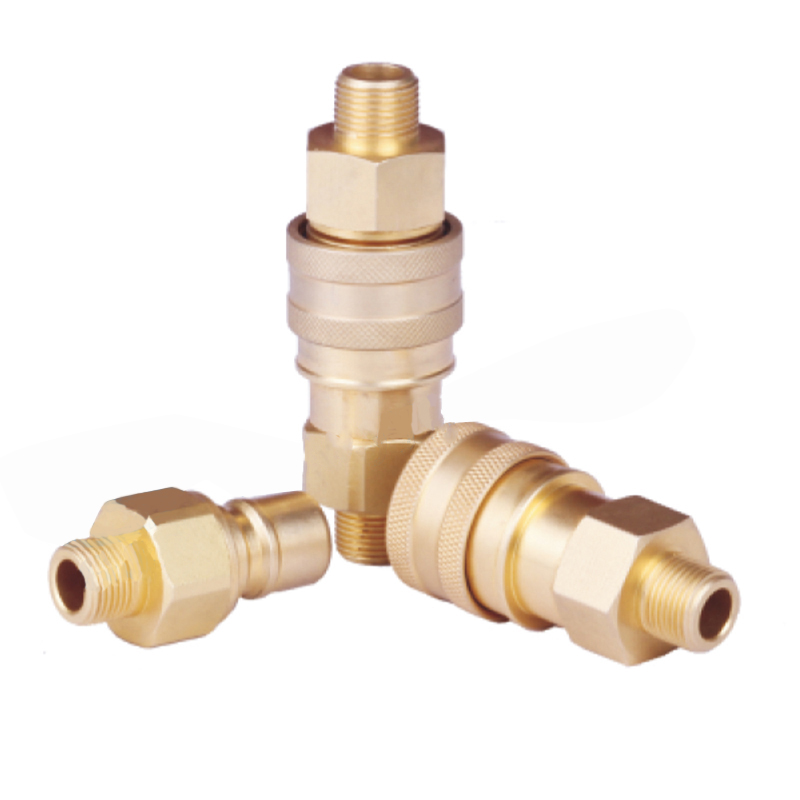What are the challenges and solutions for preventing cross-contamination when using Quick Release Couplings in various fluids?
Preventing cross-contamination when using Quick Release Couplings (QRCs) in various fluids is crucial, especially in industries where different fluids are handled. Here are some of the challenges and solutions for addressing this issue:
Challenges:
1.Fluid Residue: Fluids can leave residue within the coupling, leading to contamination when a different fluid is introduced.
2.Incompatibility: Some fluids may react with residues from previously used fluids, causing chemical reactions and contamination.
3.Mismatched Couplings: Accidental connection of the wrong fluid lines due to similar-looking couplings can lead to contamination.
4.Incomplete Draining: Not all fluids are easy to drain completely from the QRC, leaving traces that can mix with the next fluid.
Solutions:
1.Color Coding:
Color coding is a visual identification system that assigns specific colors to Quick Release Couplings (QRCs) and corresponding fluid lines.
This strategy ensures that operators can easily match the correct QRC to the corresponding fluid, reducing the risk of cross-contamination.
Color coding should be standardized and clearly documented in operating procedures for consistency and safety.
2.Flush and Drain:
Designing the fluid system to incorporate flush and drain capabilities is critical in preventing cross-contamination.
This involves the installation of additional valves or drain ports at strategic points in the system to allow for the purging of residual fluids.
Proper flushing and draining procedures must be established and followed to remove any remnants of the previous fluid before introducing a new one.
3.Dedicated Couplings:
Assigning dedicated QRCs for specific fluids is a proactive measure to prevent accidental mixing.
These QRCs should be clearly marked and segregated, ensuring they are not interchangeable with couplings used for other fluids.
Maintenance and storage practices should reinforce the concept of dedicated QRCs to avoid mix-ups.
4.Use Dual-Shut Off Couplings:
Dual-shut off QRCs are designed to seal both the coupling and the nipple when disconnected, preventing spillage and minimizing the risk of cross-contamination.
These couplings are highly effective in applications where fluid integrity is paramount.
Regular inspection and maintenance are essential to ensure the sealing mechanism remains functional.
5.Regular Maintenance:
Establish a routine maintenance schedule that includes inspection and cleaning of QRCs.
Inspection involves checking for wear, damage, or signs of contamination in both the coupling and the nipple.
Cleaning procedures should aim to remove any residual fluid, dirt, or debris that may compromise fluid purity.
6.Fluid Compatibility Charts:
Develop and maintain comprehensive fluid compatibility charts that specify which fluids can safely pass through each QRC.
These charts should be readily available to operators for quick reference, enabling informed decisions regarding fluid handling.
7.Training and Awareness:
Provide comprehensive training to personnel on the importance of preventing cross-contamination.
Operators should be aware of the potential risks and the specific procedures in place to mitigate them.
Continuous reinforcement of these practices through training and awareness programs is essential.
8.Validation Testing:
Periodically conduct validation tests to ensure that cross-contamination is not occurring within the system.
This may involve fluid analysis, pressure tests, or other methods to verify the integrity of the fluid-handling system.
9.Labeling:
Clearly label fluid lines, QRCs, and fluid containers with standardized and easily recognizable identifiers.
Labels should include information such as fluid type, flow direction, and any specific handling instructions.
10.Custom Solutions:
In cases where standard QRCs may not adequately prevent cross-contamination, consider custom-designed QRCs.
These couplings can feature unique profiles or locking mechanisms that make them incompatible with other fluids.
The GT-B2 copper external thread medium pressure high performance gas-liquid quick connector is a type of quick connector used to connect gas and liquid lines in industrial and commercial applications. The connector consists of a male and a female component, which are designed to fit together quickly and easily to form a tight seal.













Contact Us